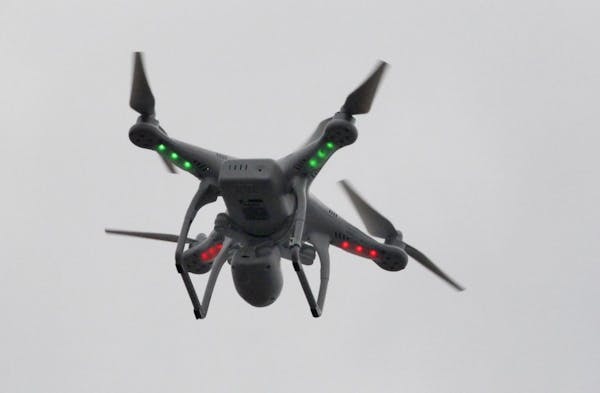HACKENSACK, N.J. – For some holiday gift givers, this is the year of the drone.
There's the DJI Phantom 2 Vision, which has four propellers and a high-definition camera. It can fly for miles on autopilot and is priced at $1,200.
There's the Parrot AR 2.0, for sale by Amazon for $394.95, but available for $299 if you buy it from Verizon — and use your smartphone to fly it.
Looking to entertain the kids without spending three figures? No problem. Right now you can drive to Radio Shack and buy the store brand's Surveyor Drone. It's red. It shoots video. With the tap of a button, it'll even do barrel rolls. And it's cheap. Normally priced at $69.99, this marvel of modern aviation is on sale for $59.
"I bought them because they're cool," said Rob Powley of Mahwah, N.J., who bought some drones preassembled and built others. He enjoys his drones so much that he forgets how many he actually owns. "It's amazing what you can do with a drone. And they're getting better all the time."
But for pilots of commercial planes, tourists in national parks, and even pedestrians, drones could pose problems. For years the province of top-secret military operations, and later the public face of America's air wars against insurgents in Iraq and Afghanistan, drone technology has arrived in the consumer market, trading precision and lethality for easy-to-use cameras and low-cost fun.
As the sale of drones to hobbyists exploded in 2014, however, so too did concerns about safety and privacy, along with calls for tighter state and federal regulation. Which means that fun gift you place under the tree this year might soon face tight new regulations.
"It's fluid, and it's confusing," Wells C. Bennett, a fellow at the Brookings Institution who studies national security law, said about the changing rules concerning hobbyist drones. "There's a patchwork of laws that vary by state and municipality. And a lot of the laws will change over the next couple of years."
Explosive growth in sales
Just five years ago, drones available to consumers simply didn't exist, said Mike Blades, an aerospace and defense-industry analyst for Frost & Sullivan, a market-research firm. Since then, growth has exploded. In what he calls a conservative estimate, Blades figures consumers will spend $720 million on drones this year. Next year, that will double, which translates to 200,000 units sold every month. By 2020, the consumer market for hobbyist drones will reach $4.5 billion, Blades estimates.
With four rotors and advanced microchips to help stabilize flight, drones are easier to fly than traditional radio-controlled planes and helicopters. They also move differently, replacing an airplane's fluid dips and arcs with the sharp pivots of a robot. Drones take off vertically, leaping straight into the sky. At altitude, a drone's computer can be synced with global positioning coordinates, causing the craft to change course abruptly before zooming off.
Many drones can perform barrel rolls and loop-de-loops, but some off-the-shelf models come preprogrammed to prevent such maneuvers, said Steve Cohen, who teaches students about unmanned avionics at New Jersey's Bergen Community College.
Old-fashioned radio-controlled planes "are great, but you need a lot of space. A small quadcopter you can fly around your house," said Powley, who does fly his drones around his house and office. "Also you can fly with first-person video, so it looks like you're inside it. That's really cool."
Limited flight times
Many military drones were designed for stealth, but there's nothing sneaky about most hobbyist models. Each propeller hums at a different pitch, which together creates a racket like a hive of angry bees. And when the battery dies, watch out. Drones under $100 may fly for just a minute or two; drones that cost around $500 may get 12 minutes.
Concerns about the privacy and safety of consumer drones are growing as quickly as the market itself. After complaints of drones buzzing too close to tourists at Mount Rushmore, the Grand Canyon and Yosemite, the National Park Service in June temporarily banned drones until the agency can work out a permanent policy.
FAA regulations require operators to keep small unmanned aircraft below 400 feet and at least five miles away from airports. Sen. Dianne Feinstein, D-Calif., intends to introduce federal legislation cracking down on all private drones, possibly including hobbyists', which would include "substantial criminal penalties if manned aircraft or people are put at risk."
